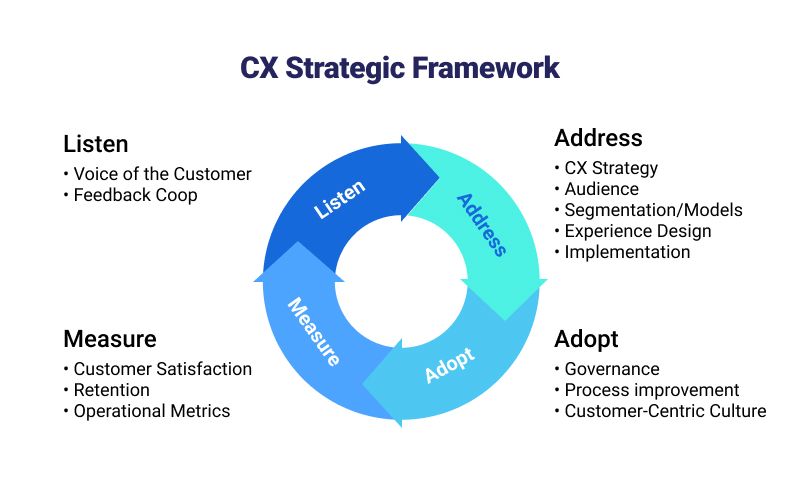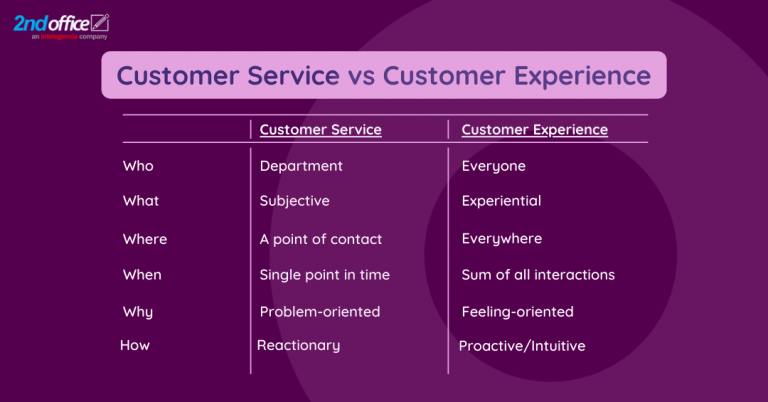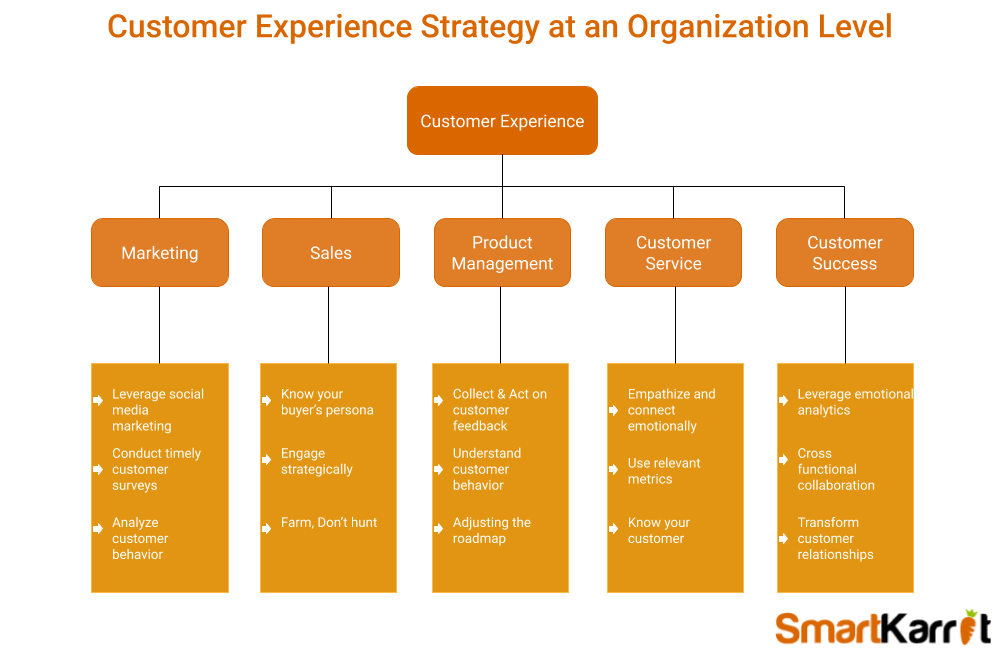Customer experience strategy is paramount for business success in today’s competitive landscape. It’s not merely about providing good customer service; it’s about crafting a holistic journey that delights customers at every touchpoint, from initial interaction to long-term loyalty. This guide delves into the core principles of developing and implementing a robust customer experience strategy, exploring key aspects such as understanding customer needs, designing seamless interactions, and leveraging technology to enhance the overall experience.
We will examine effective methods for gathering and analyzing customer feedback, creating detailed customer personas, and mapping the customer journey to identify areas for improvement. Furthermore, we’ll discuss the crucial role of employee engagement in delivering exceptional customer service and explore the use of key performance indicators (KPIs) to measure and track success. Real-world case studies will illustrate both triumphs and pitfalls, offering valuable lessons learned along the way.
Defining Customer Experience Strategy

A customer experience (CX) strategy is a carefully planned approach to consistently delivering positive and memorable interactions with your customers across all touchpoints. It’s about understanding your customers’ needs and expectations, then designing every interaction to exceed them. A well-executed strategy fosters loyalty, drives revenue, and builds a strong brand reputation.
A successful customer experience strategy encompasses several core components. Ignoring even one can weaken the overall effectiveness.
Core Components of a Successful Customer Experience Strategy
A robust CX strategy requires a holistic view of the customer journey. This includes understanding customer needs at every stage, from initial awareness to post-purchase support. It’s not simply about reacting to problems but proactively shaping the experience to be positive and seamless. Key components include:
- Customer Understanding: Deeply understanding customer needs, pain points, and expectations through research, data analysis, and feedback mechanisms. This involves using tools like surveys, interviews, and social media monitoring to gain insights into customer behavior and preferences.
- Journey Mapping: Visualizing the complete customer journey across all touchpoints, identifying potential friction points, and opportunities for improvement. This process helps to identify areas where the customer experience can be optimized.
- Service Design: Designing seamless and intuitive processes and interactions across all channels. This includes designing user-friendly websites, efficient call centers, and clear communication strategies.
- Technology Integration: Leveraging technology to personalize and improve the customer experience. This could involve using CRM systems, chatbots, and other tools to enhance customer interactions.
- Employee Empowerment: Equipping employees with the training, tools, and authority to resolve customer issues effectively and create positive interactions. Happy and empowered employees are key to a positive customer experience.
- Measurement and Optimization: Continuously monitoring and measuring key metrics to track the effectiveness of the CX strategy and identify areas for improvement. This involves using analytics to track customer satisfaction, loyalty, and other key performance indicators.
Customer Experience vs. Customer Service
While often used interchangeably, customer experience and customer service are distinct concepts. Customer service is a subset of the overall customer experience, focusing on resolving specific issues and requests. Customer experience, on the other hand, encompasses the entire customer journey and aims to create a positive and memorable impression. Think of customer service as a single touchpoint, while customer experience is the sum total of all touchpoints.
For example, a company might provide excellent customer service by quickly resolving a product defect. However, if the overall experience, including the website navigation, ordering process, and communication, is poor, the overall customer experience will still be negative.
Examples of Companies with Exemplary Customer Experience Strategies
Several companies have built reputations for their exceptional customer experience. Apple, for instance, is known for its intuitive product design, seamless in-store experience, and readily available, knowledgeable support staff. Zappos prioritizes exceptional customer service, offering free shipping and returns, and empowering its employees to go the extra mile to resolve customer issues. Netflix’s personalized recommendations and intuitive user interface contribute to its highly positive customer experience. These companies demonstrate a commitment to understanding and exceeding customer expectations at every stage of the journey.
Framework for Developing a Customer Experience Strategy
Developing a robust CX strategy requires a structured approach. A successful framework typically includes the following phases:
- Define Objectives and KPIs: Clearly define the goals of the CX strategy and establish measurable key performance indicators (KPIs) to track progress. This might include metrics like customer satisfaction (CSAT), Net Promoter Score (NPS), and customer lifetime value (CLTV).
- Understand Your Customers: Conduct thorough customer research to understand their needs, pain points, and expectations. This involves collecting data from various sources, including surveys, interviews, and social media.
- Map the Customer Journey: Create a visual representation of the customer journey, highlighting all touchpoints and potential areas for improvement. This will help to identify bottlenecks and opportunities for optimization.
- Design and Implement Solutions: Develop and implement solutions to address identified pain points and enhance the customer experience. This might involve improving website usability, streamlining processes, or providing additional training to employees.
- Monitor and Optimize: Continuously monitor key performance indicators and make adjustments to the strategy as needed. Regularly review customer feedback and adapt the approach to ensure the CX strategy remains effective and aligned with evolving customer needs.
Understanding Customer Needs and Expectations

A deep understanding of customer needs and expectations is paramount to crafting a successful customer experience strategy. Ignoring this crucial element leads to misaligned efforts and ultimately, dissatisfied customers. By proactively identifying and addressing customer needs, businesses can foster loyalty, increase retention, and drive revenue growth. This section will explore key methods for gathering and analyzing customer feedback, and the importance of visualizing the customer journey.
Understanding your customers’ needs and expectations requires a multi-faceted approach. This involves employing various methods to gather feedback, meticulously analyzing the collected data to identify pain points, and visualizing the entire customer journey to pinpoint areas for improvement. By systematically addressing these aspects, businesses can build a customer-centric strategy that delivers exceptional experiences.
Methods for Gathering Customer Feedback
Several effective methods exist for gathering valuable customer feedback. These methods provide a holistic view of customer sentiment and highlight areas needing attention. The choice of method often depends on the specific goals and resources available.
- Surveys: Online surveys, email surveys, and even in-person surveys can gather quantitative and qualitative data on customer satisfaction, preferences, and pain points. Well-designed surveys with clear questions and concise responses yield valuable insights.
- Focus Groups: Moderated discussions with small groups of customers provide rich qualitative data, revealing underlying motivations and attitudes. This method is particularly useful for understanding complex issues or exploring emerging trends.
- Social Media Monitoring: Actively monitoring social media channels for mentions of the brand or product allows businesses to understand customer sentiment in real-time and address concerns promptly. This offers valuable insights into public perception.
- Customer Interviews: One-on-one interviews allow for in-depth exploration of individual customer experiences. This method provides detailed qualitative data and allows for probing deeper into specific responses.
- Customer Reviews and Feedback Forms: Collecting reviews on platforms like Yelp, Google My Business, and dedicated feedback forms on the company website offers direct insights into customer satisfaction and areas for improvement. This data provides readily available insights.
Analyzing Customer Data to Identify Pain Points
Once customer feedback is gathered, it must be meticulously analyzed to pinpoint pain points. Effective analysis involves identifying recurring themes, patterns, and negative sentiment. This process allows for targeted improvements to the customer experience.
Data analysis techniques range from simple frequency counts to sophisticated sentiment analysis using natural language processing (NLP). Visualizations such as charts and graphs can effectively communicate key findings to stakeholders. For instance, a high frequency of negative comments regarding slow shipping times indicates a need for improvements in the logistics process. Similarly, consistently low ratings on a specific product feature highlight a need for design or functionality changes. Prioritizing issues based on their frequency and severity is crucial for effective resource allocation.
A robust customer experience strategy hinges on building trust and transparency. A key component of this involves ensuring you’re adhering to all relevant regulations; understanding and implementing E-commerce legal compliance is paramount. This not only protects your business but also fosters a positive customer perception, solidifying your brand reputation and ultimately contributing to a more positive overall experience.
The Importance of Customer Journey Mapping
Customer journey mapping is a powerful tool for visualizing the entire customer experience from initial awareness to post-purchase engagement. It provides a holistic view of touchpoints and allows for identification of areas needing improvement. A well-constructed journey map helps to understand the customer’s perspective and anticipate potential pain points.
A typical customer journey map includes stages such as awareness, consideration, purchase, and post-purchase. Each stage details customer actions, emotions, and touchpoints. For example, a map might reveal friction in the online checkout process, leading to cart abandonment. Identifying such bottlenecks allows for targeted improvements to the customer journey, leading to increased conversion rates and customer satisfaction. By using a visual representation of the customer’s journey, businesses can gain a much clearer picture of the entire experience and identify key areas of friction or delight.
Example Customer Persona: The Busy Professional
Let’s create a hypothetical customer persona: “Sarah,” a 35-year-old marketing manager. Sarah is highly time-constrained, values efficiency, and prioritizes quality over price. She uses technology extensively for both work and personal life.
Needs: Quick and easy access to information, reliable and efficient service, high-quality products that meet her professional needs, and seamless online experiences. She needs solutions that save her time and streamline her workflow. She dislikes complicated processes and long wait times.
Expectations: Prompt responses to inquiries, clear and concise communication, user-friendly websites and apps, personalized recommendations, and proactive customer support. She expects a high level of professionalism and responsiveness. She values transparency and honesty in interactions.
Designing Customer Interactions
Designing effective customer interactions is crucial for building strong relationships and fostering loyalty. A well-designed interaction strategy considers the entire customer journey, from initial contact to ongoing engagement, ensuring a seamless and positive experience at every touchpoint. This involves careful planning of onboarding processes, communication strategies across various channels, and personalized experiences that resonate with individual customer needs.
Successful customer interaction design requires a deep understanding of customer behavior and preferences. It’s not just about providing information; it’s about creating meaningful connections that build trust and encourage repeat business. By strategically designing each interaction, businesses can significantly improve customer satisfaction, increase retention rates, and ultimately drive revenue growth.
Customer Onboarding Process Design
A well-designed onboarding process sets the stage for a positive and lasting customer relationship. It should be simple, intuitive, and provide immediate value to the customer. Effective onboarding minimizes friction and ensures customers quickly understand how to use the product or service and realize its benefits. This can involve a series of guided tutorials, interactive walkthroughs, or personalized support from a dedicated onboarding specialist. For example, a SaaS company might offer a series of short video tutorials explaining key features, accompanied by email reminders and in-app prompts to guide users through the process. This approach ensures that customers are not overwhelmed and are empowered to use the product effectively from the outset. A poorly designed onboarding process, on the other hand, can lead to frustration, churn, and negative word-of-mouth.
Strategies for Improving Customer Communication Across Multiple Channels
Effective customer communication requires a multi-channel approach that meets customers where they are. This means utilizing a variety of communication channels, such as email, phone, social media, live chat, and in-app messaging, to provide consistent and personalized support. A key aspect of this is ensuring consistent messaging across all channels; customers should receive the same level of service and information regardless of how they choose to communicate. Furthermore, integrating these channels to provide a seamless customer experience is crucial. For example, a customer might initiate a query via live chat, and then receive follow-up information via email, maintaining context and continuity throughout the interaction. This omnichannel approach allows businesses to cater to individual customer preferences and provide a more personalized experience.
Communication Channel Strengths and Weaknesses
| Communication Channel | Strengths | Weaknesses | Best Use Cases |
|---|---|---|---|
| Cost-effective, asynchronous, allows for detailed information | Can be easily overlooked, impersonal, limited immediate feedback | Sending newsletters, transactional updates, providing detailed instructions | |
| Phone | Allows for immediate feedback, personal interaction, effective for complex issues | Can be expensive, time-consuming, limited scalability | Handling urgent issues, resolving complex problems, providing personalized support |
| Live Chat | Instantaneous support, convenient for customers, improves website engagement | Limited to online interactions, requires trained agents, can be disruptive if not managed well | Providing quick answers to simple questions, guiding users through website navigation |
| Social Media | Reaches a wide audience, allows for two-way communication, enhances brand visibility | Can be challenging to manage, requires quick response times, negative feedback is publicly visible | Building brand awareness, responding to customer inquiries, engaging with potential customers |
Personalizing the Customer Experience at Various Touchpoints
Personalization involves tailoring the customer experience to individual needs and preferences. This can be achieved through data analysis, segmentation, and the use of personalized messaging. For example, an e-commerce website might recommend products based on a customer’s past purchases or browsing history. A travel company might send personalized travel recommendations based on a customer’s destination preferences and budget. Personalization enhances the customer experience by making interactions more relevant and meaningful. This, in turn, leads to increased customer engagement, loyalty, and ultimately, revenue. Effective personalization requires a robust data infrastructure and the ability to leverage customer data ethically and responsibly. However, it is important to note that personalization should be balanced with privacy concerns; customers should have control over their data and how it is used.
Measuring and Improving Customer Experience
Understanding and improving customer experience requires a robust system for measuring success and identifying areas for growth. This involves tracking key performance indicators (KPIs), analyzing customer feedback, and implementing changes based on data-driven insights. A proactive approach to measurement allows businesses to anticipate potential problems and enhance customer satisfaction proactively, fostering loyalty and driving positive business outcomes.
Effective measurement provides crucial insights into the effectiveness of customer experience strategies. By monitoring relevant metrics, companies can identify areas of strength and weakness, enabling data-driven decision-making and continuous improvement. This iterative process ensures that the customer experience consistently aligns with business objectives and customer expectations.
Key Performance Indicators (KPIs) for Measuring Customer Experience
Several key performance indicators (KPIs) provide a comprehensive overview of customer experience. These metrics offer quantifiable data points to track progress and measure the impact of implemented improvements. Selecting the right KPIs depends on specific business goals and the nature of the customer interaction.
Examples of crucial KPIs include Customer Satisfaction (CSAT) scores, Net Promoter Score (NPS), Customer Effort Score (CES), and resolution time for customer service issues. Monitoring these metrics, alongside website analytics and social media sentiment, offers a holistic view of customer perception and experience.
Methods for Tracking Customer Satisfaction and Loyalty
Tracking customer satisfaction and loyalty involves implementing a range of methods designed to capture both quantitative and qualitative data. These methods provide a comprehensive understanding of customer sentiment and help identify areas needing attention. A combination of approaches is generally most effective.
Common methods include surveys (CSAT, NPS), feedback forms (online and in-person), social media monitoring, customer reviews, and loyalty programs. Analyzing data from these sources allows for a detailed picture of customer satisfaction and loyalty levels. For instance, a declining NPS score might indicate a need for improvements in a specific area of the customer journey, prompting targeted interventions.
Using Customer Feedback to Drive Improvements in the Customer Experience
Customer feedback, whether positive or negative, provides invaluable insights into areas for improvement. Analyzing this feedback allows businesses to understand customer needs, identify pain points, and address concerns effectively. This process is crucial for shaping the customer experience and building stronger customer relationships.
Analyzing feedback involves identifying recurring themes and patterns. For example, consistently negative comments about a specific product feature might highlight a need for redesign or improvement. This data-driven approach allows for targeted improvements that directly address customer concerns, leading to increased satisfaction and loyalty. Feedback can be gathered through various channels and analyzed using qualitative and quantitative methods, depending on the type of feedback and the available resources.
A robust customer experience strategy hinges on understanding how customers interact with your brand. A key element of this is anticipating their search behavior, which increasingly involves voice search. Optimizing for this is crucial; effectively leveraging Voice search optimization techniques allows you to meet customers where they are, enhancing their experience and boosting your brand visibility.
Ultimately, a successful strategy integrates all touchpoints, including this vital aspect of modern search.
Implementing and Monitoring Customer Experience Improvements
Implementing and monitoring improvements requires a structured approach to ensure changes are effective and sustainable. This involves creating a plan, implementing changes, tracking progress, and making adjustments as needed. Continuous monitoring is key to maintaining a high standard of customer experience.
A structured plan might include identifying specific areas for improvement, setting measurable goals, implementing changes, tracking the impact of those changes using the previously defined KPIs, and making adjustments based on the results. For instance, if a change aimed at reducing customer service resolution time proves ineffective, the plan should be revisited and revised. Regular reviews and adjustments are crucial to ensure the plan remains effective and aligned with evolving customer needs and expectations.
Technology and Customer Experience
Technology plays a pivotal role in shaping modern customer experiences. Its effective integration can streamline processes, personalize interactions, and ultimately foster stronger customer relationships, leading to increased loyalty and advocacy. A well-executed technology strategy enhances every touchpoint, from initial website interaction to post-purchase support.
The seamless integration of technology across all customer touchpoints is crucial for a positive experience. This includes website design, mobile apps, social media engagement, and customer service channels. A cohesive and intuitive experience across these platforms fosters trust and brand loyalty. Failing to provide a consistent experience across various platforms can lead to customer frustration and ultimately impact business success.
AI and Machine Learning in Customer Interactions
Artificial intelligence (AI) and machine learning (ML) are transforming customer interactions by enabling businesses to provide more personalized and efficient service. AI-powered chatbots can handle routine inquiries, freeing up human agents to focus on more complex issues. ML algorithms can analyze customer data to predict future needs and proactively address potential problems. For example, an e-commerce platform could use ML to predict which products a customer might be interested in based on their past purchases and browsing history, thereby personalizing their shopping experience and increasing the likelihood of a purchase. Similarly, an airline could use AI to predict potential flight disruptions and proactively notify passengers, minimizing disruption and improving customer satisfaction.
CRM Systems and Enhanced Customer Experience
Customer Relationship Management (CRM) systems are essential tools for managing customer interactions and data effectively. A well-implemented CRM system provides a centralized repository of customer information, enabling businesses to understand customer needs and preferences better. This allows for personalized communication and targeted marketing campaigns. For instance, a CRM system could track customer purchase history, allowing sales representatives to offer relevant product recommendations or address specific concerns during follow-up calls. Further, CRM systems often include features for managing customer service requests, allowing for efficient tracking and resolution of issues, which directly contributes to a positive customer experience. Real-time data visibility within a CRM system ensures faster response times and more informed decision-making, ultimately improving customer satisfaction.
Hypothetical Customer Support Portal UI Design
A well-designed customer support portal should be intuitive, user-friendly, and easily accessible across various devices. Imagine a portal with a clean, minimalist design, featuring a prominent search bar for quickly finding answers to frequently asked questions. The homepage would showcase popular help topics and links to relevant resources, such as FAQs, tutorials, and contact information. The portal would also feature a robust knowledge base with articles and videos addressing common issues. A prominent live chat option would provide immediate assistance for urgent inquiries. The user interface would be responsive, adapting seamlessly to different screen sizes and devices. Account management features would allow users to easily view their order history, update their profile information, and manage their communication preferences. The overall design aesthetic would be consistent with the brand’s visual identity, creating a cohesive and professional experience. Furthermore, the portal would incorporate accessibility features to ensure inclusivity for all users.
Employee Engagement and Customer Experience

Happy employees often translate to happy customers. A strong correlation exists between employee engagement and customer satisfaction; engaged employees are more likely to provide excellent service, leading to increased customer loyalty and positive word-of-mouth referrals. Conversely, disengaged employees can negatively impact the customer experience, resulting in decreased satisfaction and potential loss of business.
Employee engagement significantly influences the customer experience because engaged employees are more likely to be motivated, proactive, and invested in their work. This translates directly into better customer service, improved problem-solving, and a more positive overall interaction. Conversely, disengaged employees may exhibit apathy, lack initiative, and provide subpar service, damaging the customer’s perception of the brand.
Best Practices for Training Employees to Deliver Exceptional Customer Service
Effective training programs are crucial for equipping employees with the skills and knowledge to deliver exceptional customer service. These programs should focus on practical application, role-playing scenarios, and ongoing coaching and feedback. A comprehensive training program will enhance employee confidence and proficiency in handling customer interactions, fostering a positive and productive work environment.
- Product Knowledge: Training should cover in-depth product information, features, benefits, and common uses. Employees should be able to answer customer questions accurately and confidently.
- Communication Skills: Active listening, clear and concise communication, empathy, and conflict resolution techniques are vital skills that should be practiced through role-playing exercises.
- Problem-Solving Techniques: Employees need training on effective problem-solving strategies, including identifying the root cause of issues, exploring potential solutions, and escalating problems when necessary.
- Technology Proficiency: Familiarity with customer relationship management (CRM) systems, ticketing software, and other relevant technologies is crucial for efficient service delivery.
- Company Policies and Procedures: Employees should have a thorough understanding of company policies, procedures, and protocols related to customer service.
Strategies for Empowering Employees to Resolve Customer Issues Effectively
Empowering employees to resolve customer issues independently fosters a sense of ownership and accountability, ultimately improving customer satisfaction. This involves providing employees with the necessary authority and resources to make decisions and take action without excessive bureaucratic hurdles. Strategies should focus on building trust, providing clear guidelines, and offering ongoing support.
- Decision-Making Authority: Granting employees the authority to resolve common issues without needing manager approval streamlines the process and enhances customer satisfaction.
- Access to Resources: Providing employees with the necessary tools, information, and support systems allows them to effectively address customer inquiries and concerns.
- Clear Guidelines and Protocols: Establishing clear guidelines and protocols ensures consistency in service delivery and empowers employees to make informed decisions.
- Open Communication Channels: Encouraging open communication between employees and management creates a supportive environment where employees feel comfortable seeking assistance when needed.
- Regular Feedback and Recognition: Providing regular feedback and recognizing employee achievements fosters a sense of accomplishment and motivates employees to continue delivering excellent service.
A Training Program for Customer Service Representatives
A comprehensive training program for customer service representatives should combine classroom instruction, hands-on practice, and ongoing mentorship. The program should incorporate modules on product knowledge, communication skills, problem-solving techniques, and company policies. Regular assessments and feedback are essential to monitor progress and identify areas for improvement. This program would ideally be a blend of initial training and ongoing development.
- Module 1: Introduction to Customer Service Excellence – This module covers the importance of customer service, company values, and expectations.
- Module 2: Product Knowledge and Company Policies – This module provides in-depth knowledge of products, services, and company policies relevant to customer interactions.
- Module 3: Communication Skills and Active Listening – This module focuses on effective communication techniques, including active listening, empathy, and conflict resolution.
- Module 4: Problem-Solving and Issue Resolution – This module provides training on identifying, analyzing, and resolving customer issues effectively.
- Module 5: Technology and Tools – This module covers the use of CRM systems, ticketing software, and other relevant technologies used in customer service.
- Module 6: Ongoing Mentorship and Coaching – This module provides ongoing support and guidance to customer service representatives through regular coaching sessions and feedback.
Case Studies of Customer Experience Successes and Failures

Examining successful and unsuccessful customer experience strategies provides valuable insights for businesses aiming to improve their own approaches. By analyzing contrasting approaches, we can identify key elements that contribute to positive customer experiences and understand pitfalls to avoid.
Comparison of Customer Experience Strategies: Apple and Amazon
Apple and Amazon, despite operating in different sectors, consistently rank highly in customer satisfaction surveys. Their success stems from distinct yet effective strategies. Apple prioritizes a premium, in-store experience emphasizing personalized service and product design. This creates a sense of exclusivity and brand loyalty. Amazon, on the other hand, focuses on convenience, speed, and personalized online recommendations. Their vast selection, seamless checkout process, and robust customer service infrastructure underpin their success. While Apple fosters a more emotional connection, Amazon focuses on efficiency and utility. Both strategies, however, prioritize understanding and meeting customer needs.
Key Factors Contributing to Success: Apple and Amazon
Several factors contribute to the success of both Apple and Amazon. Apple’s success is built upon a carefully cultivated brand image, a commitment to design excellence, and a highly trained retail staff. Their retail stores are designed to be more than just places to buy products; they’re carefully curated environments designed to enhance the brand experience. Amazon’s success, in contrast, hinges on its technological infrastructure, its data-driven personalization, and its commitment to efficient logistics. Their vast data sets allow them to anticipate customer needs and provide tailored recommendations, significantly improving the shopping experience. Both companies invest heavily in customer service and continuously seek ways to improve their processes.
Examples of Customer Experience Failures: JCPenney and Blockbuster
JCPenney’s attempt to reposition itself under Ron Johnson’s leadership in 2011 provides a cautionary tale. The elimination of traditional sales and promotions, coupled with a confusing new store layout, alienated long-time customers and failed to attract new ones. This highlights the risk of drastically altering a brand’s identity without considering customer preferences. Blockbuster’s failure to adapt to the rise of streaming services is another classic example. Their reluctance to embrace technological advancements and their lack of a robust online presence led to their eventual demise. These cases demonstrate the importance of adapting to changing market conditions and customer expectations.
Lessons Learned from Successes and Failures
The success of companies like Apple and Amazon emphasizes the importance of understanding your target audience and delivering a consistent experience across all touchpoints. Investing in technology and employee training are crucial for creating seamless and personalized experiences. On the other hand, the failures of JCPenney and Blockbuster underscore the dangers of neglecting customer feedback, failing to adapt to technological changes, and underestimating the importance of brand consistency. Ignoring customer preferences and failing to innovate can lead to devastating consequences. Continuous monitoring and improvement are essential to maintaining a positive customer experience.
Ultimate Conclusion

Ultimately, a successful customer experience strategy hinges on a deep understanding of customer needs, a commitment to seamless interactions across all channels, and a dedication to continuous improvement. By implementing the principles Artikeld in this guide, businesses can cultivate lasting customer loyalty, drive revenue growth, and establish a strong competitive advantage. Remember, prioritizing the customer experience isn’t just a trend; it’s a fundamental shift in how businesses operate and achieve sustainable success.